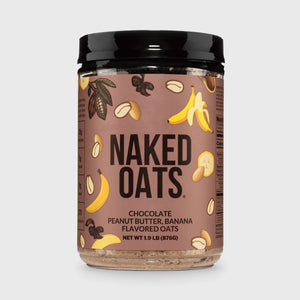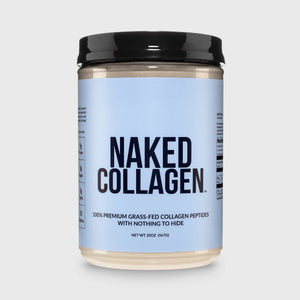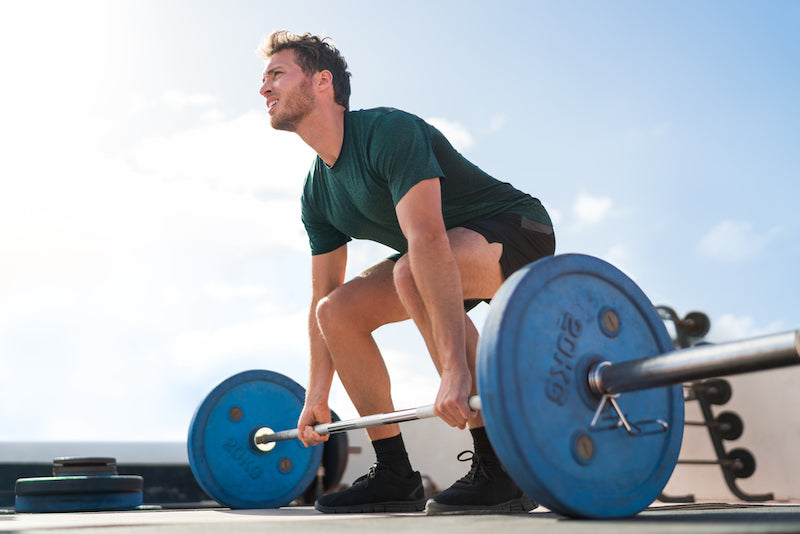Deadlifts are among the best exercises for building strength, power and muscle mass. Deadlifts are a key part of anyone’s strength training or resistance training routine, with the benefits the exercise has for all-round, functional strength and power.
The stronger your deadlift foundation, the more you’ll be able to safely lift, and the more you’ll get out of the exercise in terms of strength, power and size gains. You’ll be able to lift more, but more importantly, you’ll be confident that you can put up huge numbers while staying safe and injury-free.
In this article we’ll introduce three exercises you can add to your routine to supplement deadlifts, helping build strength in supplementary muscle groups, in order to build the foundation you need to deadlift more than you ever have before without the risk of injury.
Benefits of Deadlifts
Deadlifts, as mentioned, are one of the best exercises out there for a variety of goals.
They’re great for building muscle, building strength and power, improving functional strength and athleticism, and even improving your all-round health as you age.
Here are a few more specific benefits of adding deadlifts to your workout routine:
- Deadlifts are an all-round exercise, working a large number of different muscle groups.
- They’re particularly good for the lower body and muscles along the posterior chain and core, which benefit functional athleticism and support good posture.
- Deadlifting stimulates the production of testosterone and HGH, which helps improve strength and accelerates the rate at which you build muscle.
- You get a metabolism boost, which helps your body passively burn fat at a faster rate.
- Deadlifts are great for building power, specifically lower-body power production, allowing you to jump higher and faster.
- Deadlifting may improve bone density, helping avoid osteoporosis as you age.

Risks of Deadlifting With Incorrect Form
For all the benefits of deadlifting, there is a catch. You can develop some pretty debilitating long-term injuries if you go too heavy with incorrect form.
Poor form in your deadlift puts a lot of stress on your lower back, risking injury to the muscles and/or spine in this area.
These injuries are among the worst you can get. They’re uncomfortable, they take a long time to recover from, and get in the way of many areas of your life - not just in training.
Injuries to your spine, such as a herniated disc, are particularly serious, and often require complicated surgery to fix.
On top of all that, you can wind up straining your hamstrings or quads, or putting too much stress on your arms and developing tendonitis in the wrists or elbows.
This is not intended to frighten, or suggest that deadlifts are not safe, if done right. But this is one exercise you don’t want to settle for average form.
3 Exercises to Build a Strong Deadlift Foundation
Consistent deadlifting with good form is a great way to improve the muscle groups used in a deadlift, and safely increase your max lift.
But if you want to accelerate your progress, without taking shortcuts on form, there are other exercises that can help build the foundation for a better deadlift.
Here are three we recommend:
Good Mornings
Good mornings are a pretty unique exercise, and possibly the only exercise with a worse reputation as an injury risk than deadlifts.
To do a good morning, you load a bar across your shoulders (like a back squat), slightly bend your knees, then hinge at the hips, bending over and lowering the bar - like so:
As you can imagine, if you load too much weight and do this with incorrect form, you can do a lot of damage to your lower back, which makes good mornings perfect training for deadlifts.
Good mornings can either be done as an independent exercise to build strength in the same areas you use for deadlifts, or you can do extremely light (or unweighted) good mornings as a warm up, helping avoid the risk of injuring yourself by doing deadlifts when your muscles are still cold and stiff.
Farmer’s Carries
The farmer’s carry is one of the simplest exercises there is, yet delivers some pretty awesome benefits.
There’s really nothing to a farmer’s carry. You just hold a weight by your side in each hand (it can be a dumbbell, kettlebell, plate, or even two heavy shopping bags) and, keeping your spine straight, chest up and shoulders back, you walk.
That’s it - just walk. Either walk for a set time (e.g. 30 seconds) or a set distance (e.g. to the end of the room and back).
Farmer’s carries are great for grip strength primarily, which is essential for a strong deadlift. Better grip strength will help avoid injuries such as tendonitis by lifting more than your elbows or wrists can take. They’re also great for core and all-round body strength.
Kettlebell Swings
Finally, we’ve got the kettlebell swing.
This exercise is fundamentally very similar to a deadlift, utilizing many muscle groups along the posterior chain (legs, hips and back).
The movement, wherein you hinge at the hips to generate power and propel a kettlebell forward and up, is much like how you generate power in a deadlift.
By building similar muscle groups, kettlebell swings support a better deadlift, and vice versa. As you strengthen these muscles, particularly those along the posterior chain, you’ll be able to lift more with lower risk of injury.
Other Tips to Perform a Deadlift Safely

Other than strengthening key muscle systems such as the posterior chain, hips, core and grip, there are a few other things to note if you want to stay injury free.
Obviously, you need to get your form right and avoid common mistakes. Don’t round your back, keep the bar close to your body, don’t lock your position until the top of the lift, and make sure your body moves all as one.
Nutrition is also important. Your body needs enough energy to put out a lot of power. If you’re at too much of an energy deficit (not eating enough, especially not eating enough carbs and fat), you risk running out of power mid-lift.
It’s also important to get enough sleep and be fully focused and engaged mentally when you lift. Distractions or lapses in focus are among the most common reasons people mess up with their form when deadlifting.
A lot goes into the perfect deadlift. But if you can get to this point, by keeping your body fit and healthy, studying and practicing your form, and doing supplementary exercises like those we showed above, you’ll be able to rack up some big deadlift numbers, risk-free.














